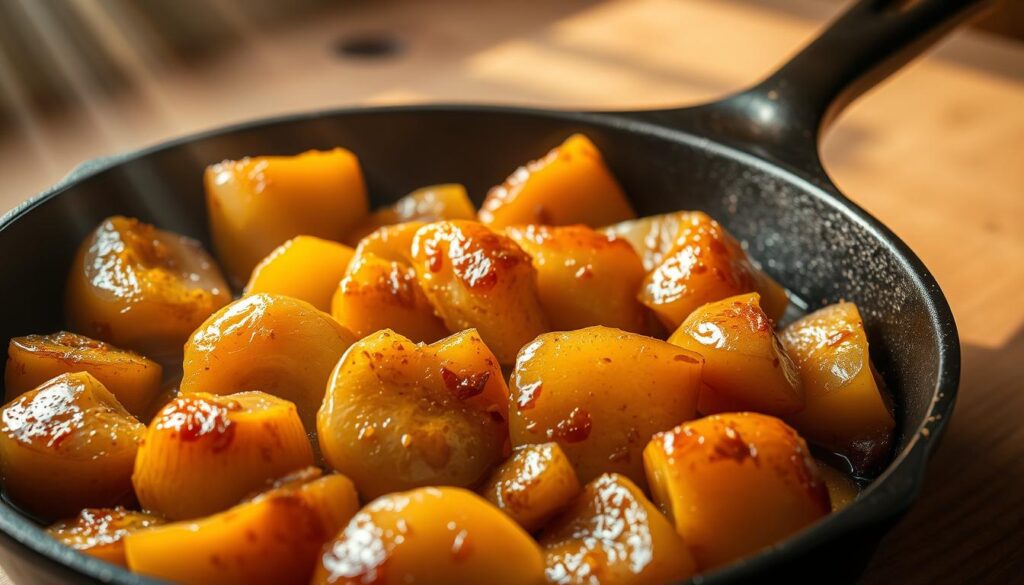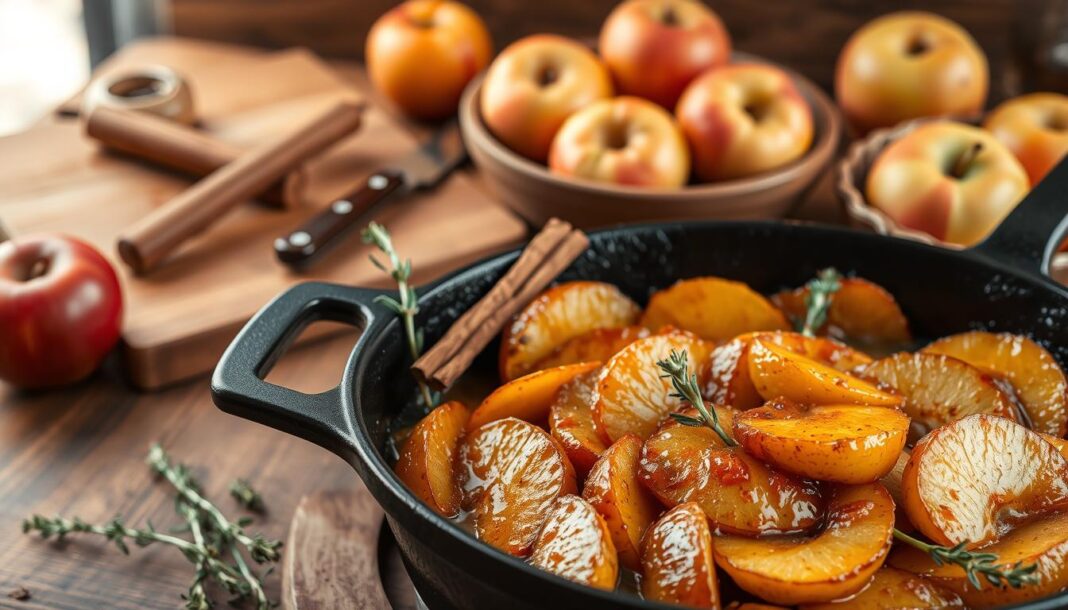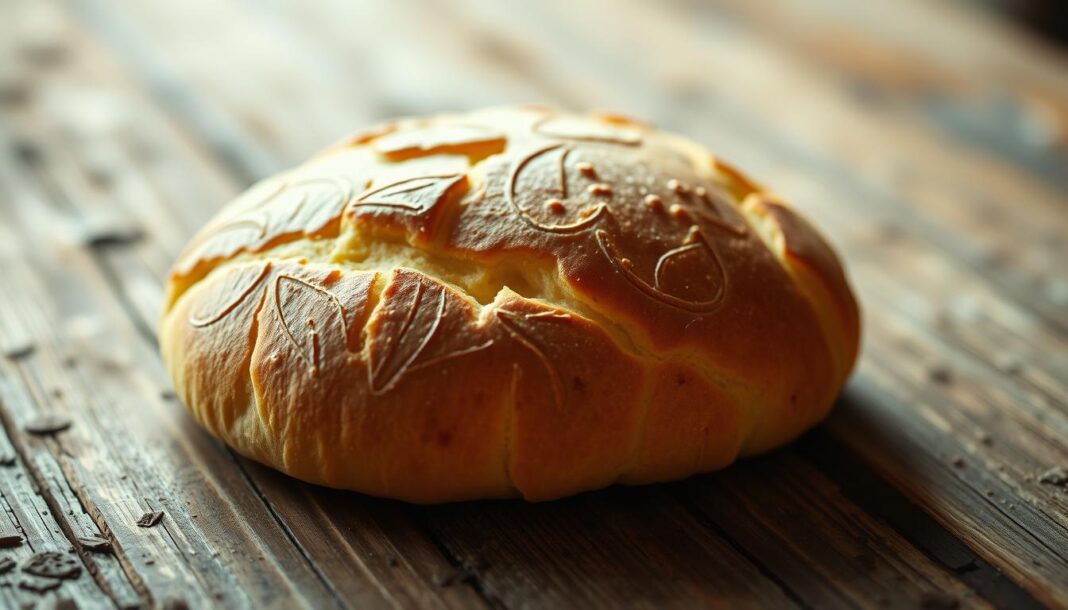At Historical Foods, we’re excited to share our expertise on creating the perfect braised apples. This delightful dessert offers a lovely twist on traditional baked apples, with a tender texture and a rich flavor profile that’s sure to impress.
Our method combines traditional techniques with modern culinary science to achieve the ideal balance of tenderness and structural integrity. By using a combination of cider and spices, we enhance the natural sweetness of the apples, creating a truly satisfying dish.
Whether you’re a casual home cook or a culinary professional, our step-by-step guide will walk you through the process of making delicious braised apples that are perfect for any occasion.
Key Takeaways
- Learn how to create perfectly braised apples with our time-tested method.
- Discover the benefits of braising over other cooking methods.
- Understand the science behind achieving the ideal texture and flavor profile.
- Explore the versatility of braised apples as a dessert or side dish.
- Gain insights into the transformation of natural sugars during the braising process.
The Magic of Tender, Flavorful Apples
When it comes to cooking apples, braising is a method that yields exceptionally tender and flavorful results. This cooking technique involves a two-stage process that not only caramelizes the apples’ natural sugars but also preserves their texture.

Why Braising Creates Perfect Texture
The unique texture achieved through braising is due to the combination of direct heat for browning and gentle simmering in liquid. This process breaks down the cell walls of the apple at the right rate, resulting in a tender yet structurally intact apple.
Best Apple Varieties for Braising
Different apple varieties respond differently to braising. We’ve found that Granny Smith, Gala, Fuji, McIntosh, and Lady apples work particularly well due to their balance of sweetness, tartness, and natural pectin content, making them ideal for this recipe. The density and flesh characteristics of these varieties ensure they hold up well to the cooking process, resulting in a delicious dish.
Essential Ingredients for Braised Apples
The foundation of exceptional braised apples lies in the quality and combination of ingredients used. We’ve refined our ingredient list through extensive testing to achieve the perfect balance of sweetness, acidity, and aromatic complexity.
Base Ingredients
Our base ingredients create the foundation for successful braising. The right balance of apples, sweeteners, and fats is crucial to the final texture and flavor. Typically, we use apples (unpeeled or peeled), sweeteners like brown sugar or maple syrup, and fats such as butter or olive oil.
Apples, Sweeteners, and Fats
The choice of apples affects the texture and flavor profile. Sweeteners add depth, while fats contribute to browning and richness. Certain fats, like vegan buttery spread or olive oil, create better browning and flavor development than others.
Flavor Enhancers
Flavor enhancers aren’t just for taste—they create aromatic compounds that transform during cooking to develop depth and complexity. We recommend using spices like cinnamon and nutmeg, extracts such as vanilla, and liquids like apple cider or sparkling cider.
Spices, Extracts, and Liquids
Measuring cup measurements precisely ensures the perfect braising environment. The right amount of liquid creates steam without causing the apples to boil. The proper application of salt is also crucial, not just for seasoning but for drawing out moisture and intensifying the apple’s natural flavors.
Equipment Needed
A skillet with a cover is the primary equipment needed. We recommend a flat-bottomed, heavy-based skillet for ideal heat control and even heat distribution. This type of pan promotes proper moisture retention during the braising process.
| Ingredient/Equipment | Purpose | Recommended Options |
|---|---|---|
| Apples | Main ingredient | Unpeeled or peeled, various varieties |
| Sweeteners | Adds depth | Brown sugar, maple syrup |
| Fats | Contributes to browning and richness | Butter, olive oil, vegan buttery spread |
| Skillet | Primary cooking vessel | Flat-bottomed, heavy-based skillet |
Our Braised Apples Step-by-Step Process
To achieve tender, caramelized apples, we follow a precise step-by-step process. This involves careful preparation, a specific browning technique, and a controlled simmering phase.
Preparing Your Apples
We begin by selecting the right apples and preparing them for braising. This typically involves halving and coring the apples, and sometimes peeling them, to ensure even cooking and optimal flavor absorption.
Initial Browning Technique
Our initial browning technique is crucial for developing the apples’ flavor and texture. We brown the apples in fat over medium heat for 3-5 minutes until their edges are nicely browned. This step creates a caramelized exterior that seals in juices and develops complex flavor compounds.
Adding Liquids and Aromatics
After browning, we add cider and aromatics like cinnamon and vanilla to the skillet. This step follows a specific sequence to maximize flavor infusion, adding liquids and spices at precisely the right moment to enhance the apples’ natural flavor.
Simmering to Perfection
To complete the braising process, we reduce heat and simmer the apples, covered, for 8-15 minutes. This gentle simmer allows the apples to become tender while still holding their shape. The total cooking time typically ranges from 20-30 mins.
| Step | Time | Heat |
|---|---|---|
| Browning | 3-5 minutes | Medium |
| Simmering | 8-15 minutes | Reduced |
| Total | 20-30 mins | – |
Serving Suggestions and Variations
As we conclude our journey through the world of braised apples, we invite you to explore the versatility of this delightful dish. Braised apples can be served as a dessert garnished with mint leaves or as a savory side dish when prepared with ingredients like bacon.
Our recipe yields four servings and can be scaled for different numbers of guests. The cooking liquid can be reduced to form a thick syrup to spoon over the apples before serving, elevating the dish from simple to restaurant-quality.


